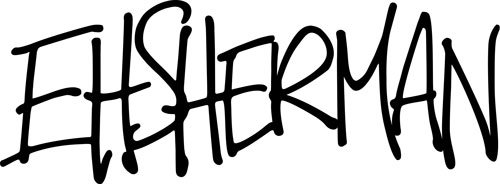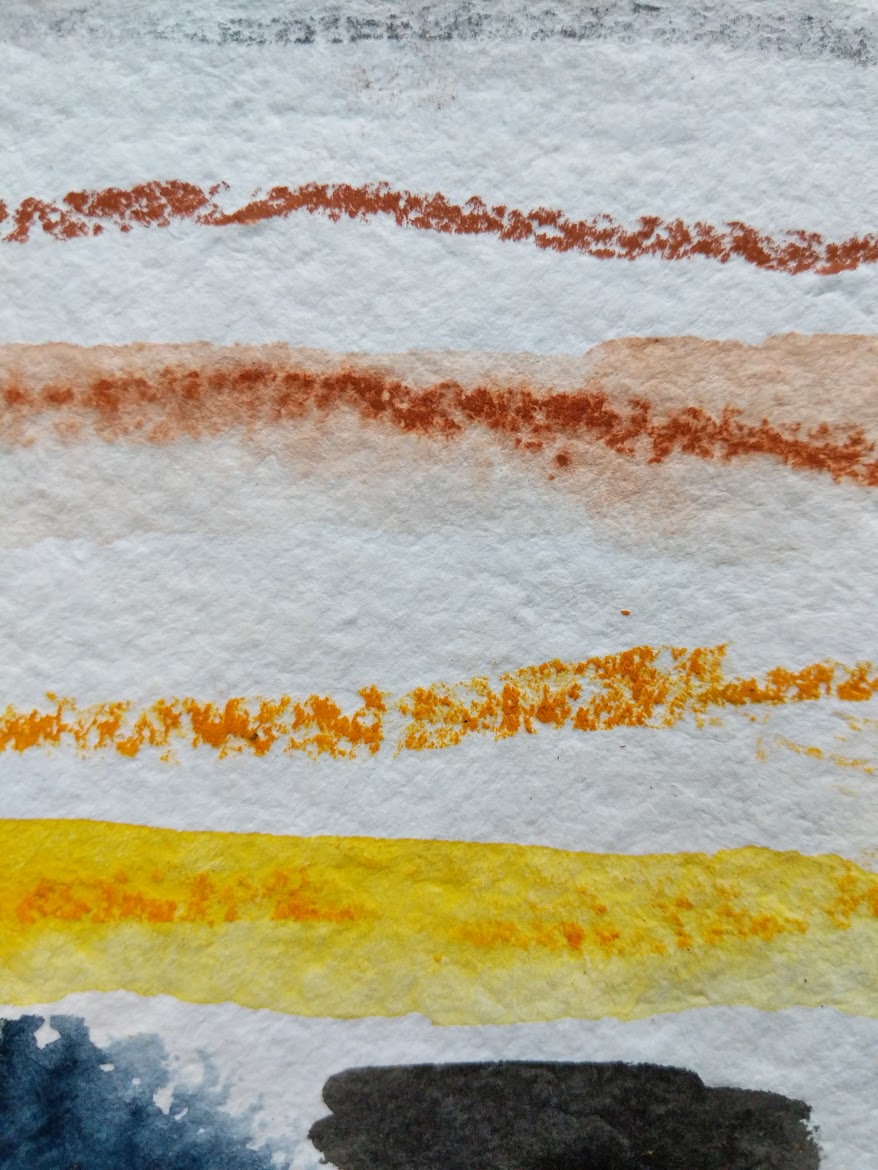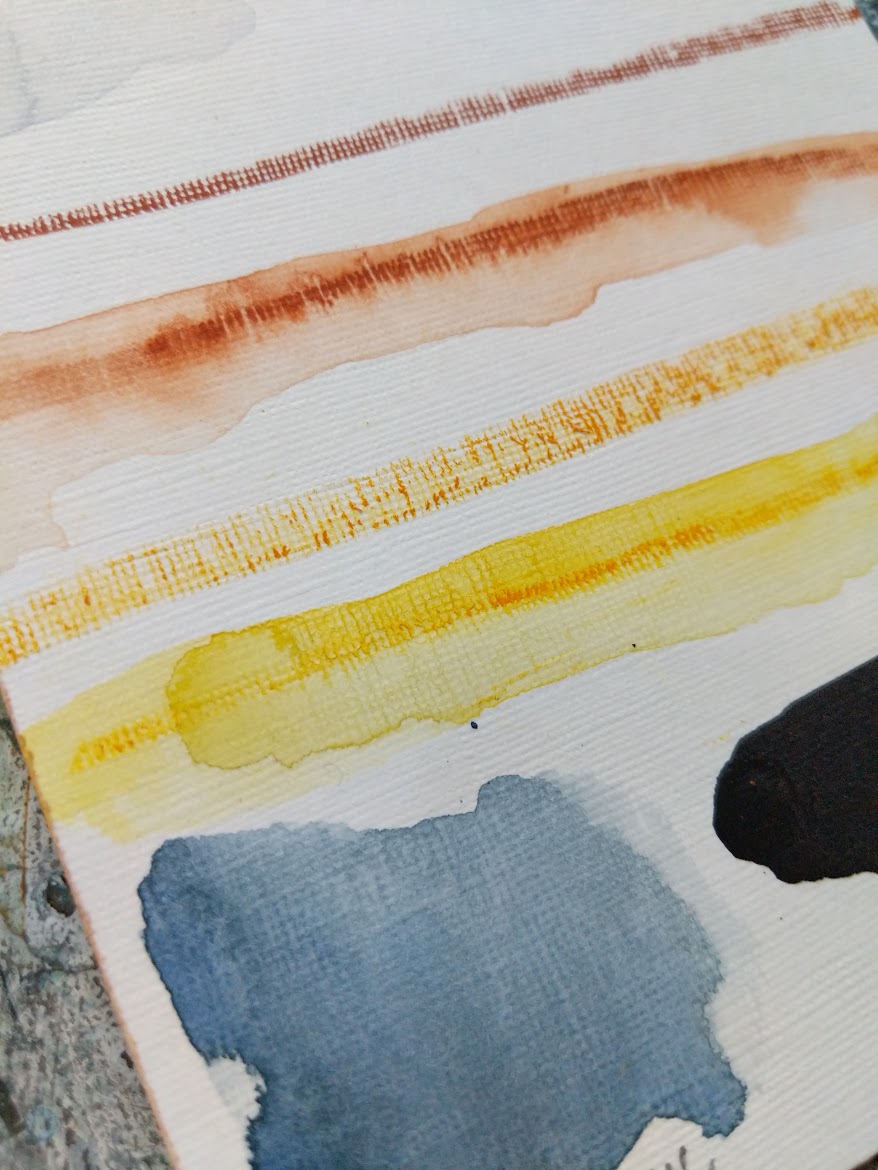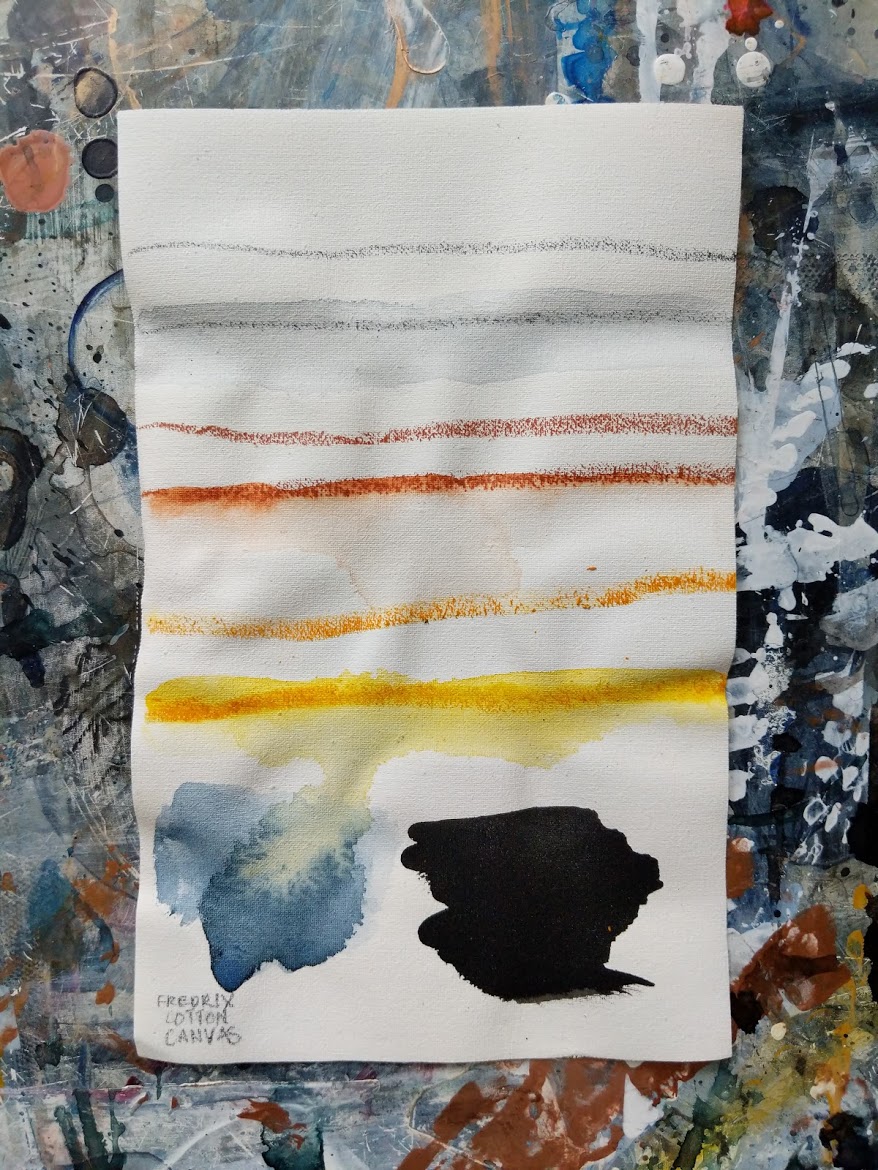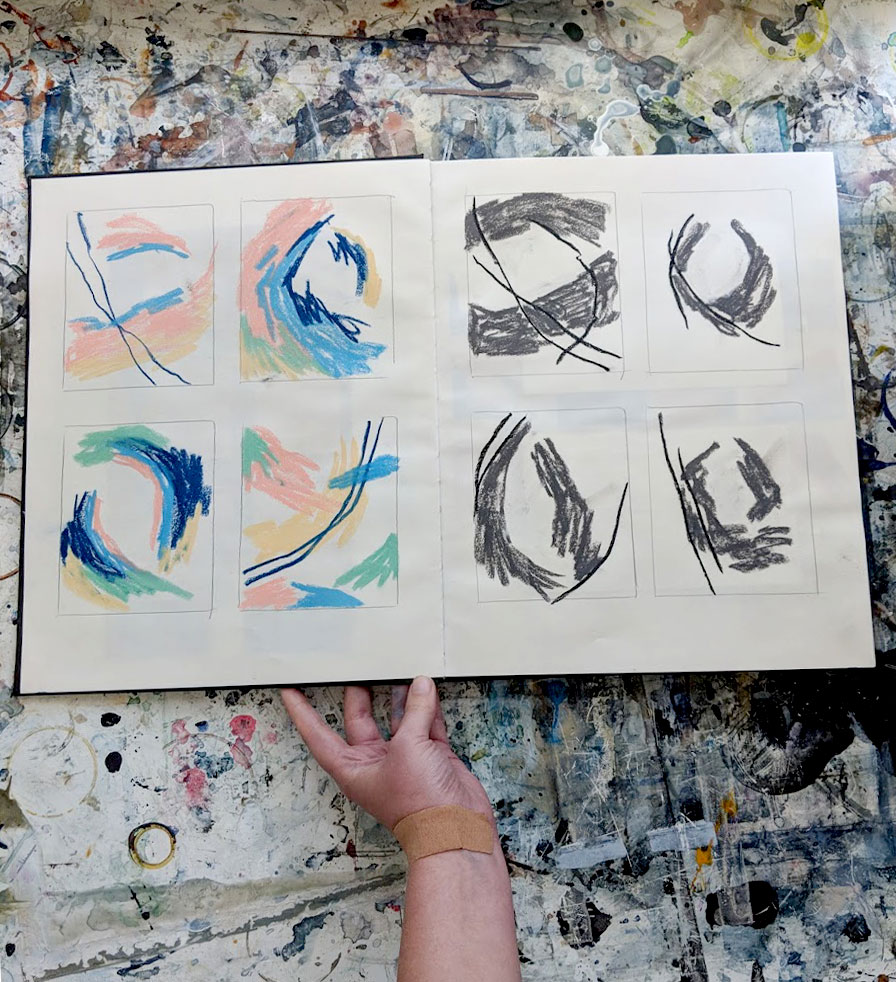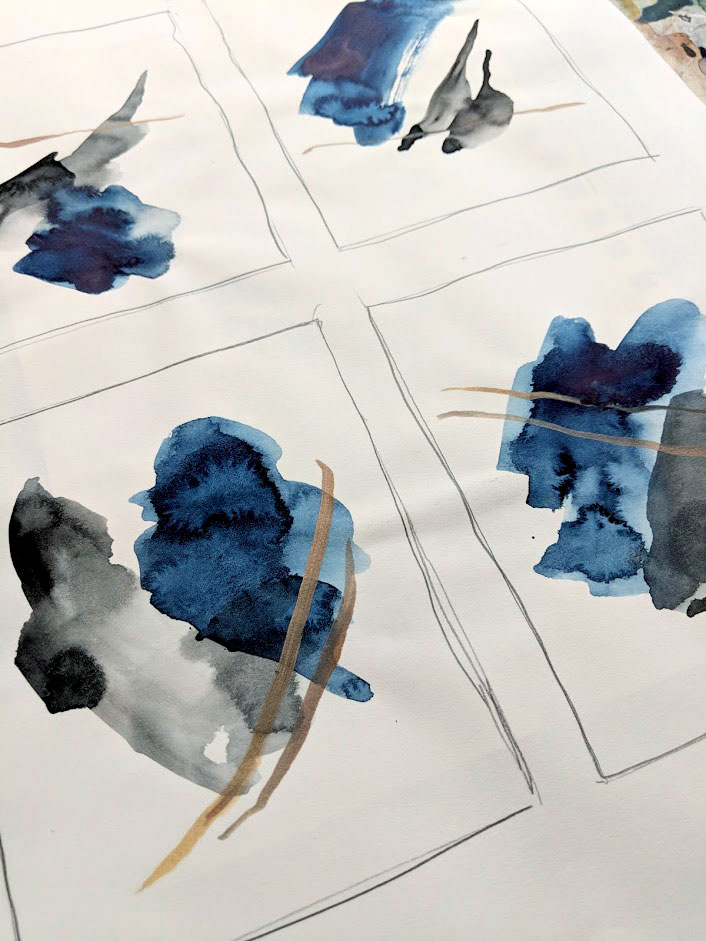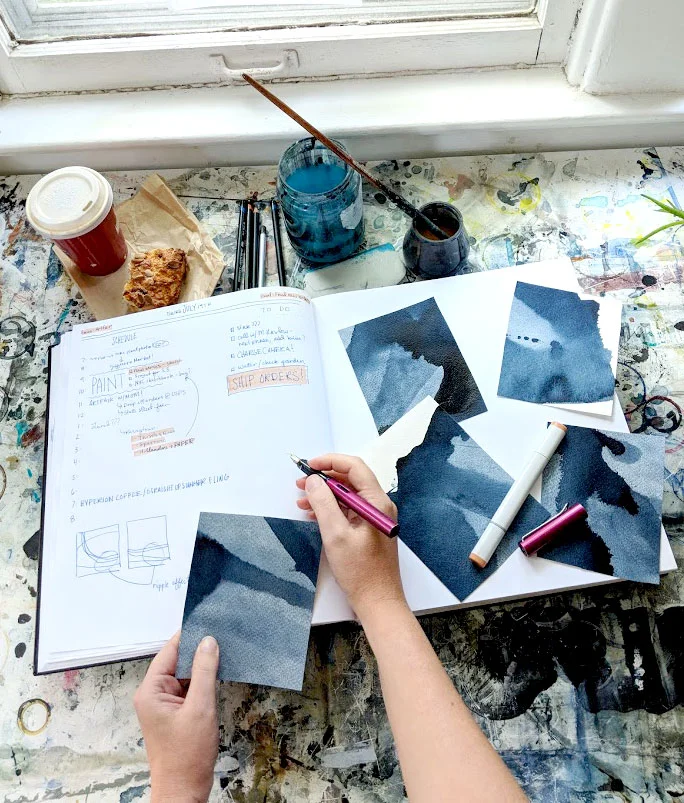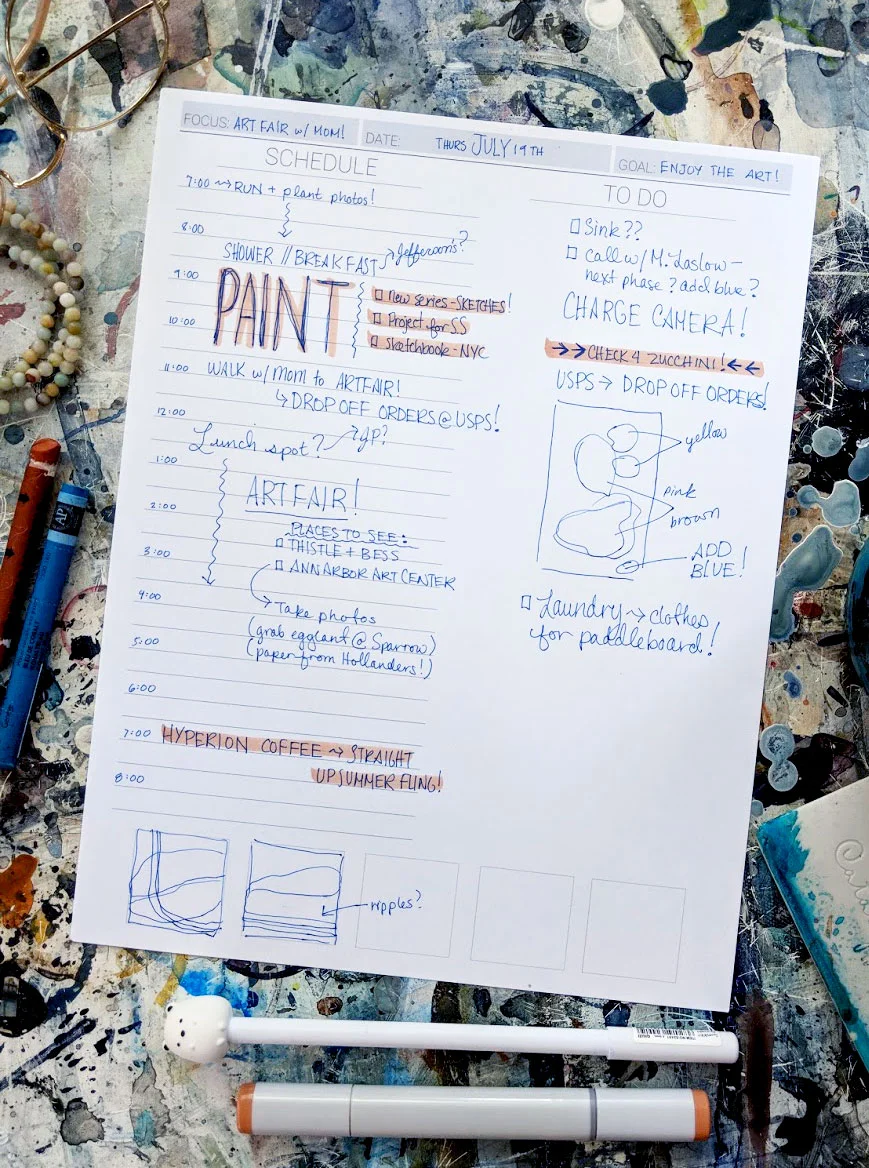From the Beach - Kona
Couldn’t pass this view up.
I had a little bit of extra time on my hands in Kona today so I packed up a few supplies and walked down the street about 20 minutes to find this little beach.
2 gessoed canvases just waiting for the right beach <3
This is the first time I’ve unrolled these canvases and I’m anxious to see how they hold up.
wet paint!
Here I’m using my watercolor pastels as I only brought carry-on bags - so no liquid paint. The watercolor pastels are great for this case as I can use them like a colored pencil and then apply water - turning them into nice pigmented washes.
And here is where I’ll stop for today - we’ve got dinner plans later so I want to make sure I’m back at the hotel and showered after this incredibly hot painting session!
Letting the paint dry!
What's in My Art Bag; Hawaii Edition
Tomorrow we head out for a little Hawaiian adventure. We’ll stay on the big island this time, rent a car and just sort of explore and venture out as the winds take us.
I’ve packed a slightly condensed bag because of this - mobility will be key and I don’t want to drag behind because I’ve overloaded my bag with supplies I won’t use.
This is the paired down collection;
Supplies for Hawaii
1.) Plastic tube.
Surfaces;
2.) Pre-stretched and gessoed canvases.
3.) Strathmore 9 x 12 Acrylic pad
4.) Fredrix 9 x 12 Watercolor Canvas
5.) Strathmore 9 x 12 Toned Mixed Media pad
6.) Moleskine Watercolor sketchbook
7.) Canson lay-flat sketchbook
Media;
8.) Fredricks and Mae circle watercolor palette
9.) Golden hi-flo in White
10.) Winsor and Newton Indigo
11.) Winsor and Newton Burnt Sienna
12.) Winsor and Newton sketching pencils
13.) Derwent graphitone watersoluble pencil
14.) Caran d’Ache watercolor pastels
Brushes;
15.) Rubber wedges
16.) Long-handled hake
17.) Niji waterbrush
And - it all fits!
So we’re off - I’ll check back in when we’re in Hawaii!
(Orders placed between today and the 13th won’t ship until the 15th, just FYI)
<3
Paper Tests; My usual materials on sample cards
** (Disclaimer) I was a bit on the fence about putting this post together. Experimentation (and actually doing it on your own) is such an incredibly important part of the process that I wondered if this piece was doing anyone any favors. And it really may not be - so please, don’t take these images and this text as your truth - GO GO DO YOUR OWN EXPERIMENTATION! Everyone’s process is different, and what works for me may not for you - and vice versa. **
That said, here’s an intro to surfaces!
Terms:
Acid-free: Acids leftover from the processing phase can yellow papers with age. It’s always a good idea to make sure whatever you are using (not limited to paper, check your tapes too!) is noted as “Acid-free” for archival purposes.
GSM/LB: These numbers refer to the weight (in pounds) of 500 sheets of 22 x 30 paper. The heavier the paper, the more sturdy it will be. I tend not to purchase anything below 140lb, as I use a lot of water in my work and anything with a weight less than that is likely to buckle and need several rounds of stretching. My favorite papers are in the 300lb range, these do not require the same amount of stretching and can hold lots of watery applications.
Surface Type:
Cotton vs. Cellulose: Artist-grade papers are 100% cotton, Cellulose papers are a little more affordable (student-grade) but use fillers instead of the natural pulp.
Hot Press: The paper is smooth and not incredibly absorbent. Colors tend to stay more vibrant on the paper, but at the sacrifice of texture.
Cold press: Slightly more texture than hot. Medium absorbency, great for washes and heavy paints.
Rough: Lots of texture, very pebbled like appearance. Can be harder to create exact details as the heavy texture can distort lines, but excellent for large stains and washes.
Fredrix Watercolor Canvas: Nice heavy cotton, medium texture, great absorbency.
Strathmore Mixed Media (toned): Heavy, smooth paper - low absorbency, so lots of opportunity to move paint around.
Strathmore Acrylic: canvas-like texture, heavy weight and great absorbency.
Sometimes the paper weights will vary company to company, so again - experimentation is key! Occasionally there are deals on sample packs of paper, so keep your eyes peeled at local art shops and online!
Materials Used:
(Top to bottom on each sample card)
Derwent Graphite Wash Pencil
Caran d’Ache water soluble pastel
Daniel Smith Watercolor Stick
Winsor and Newton watercolor (tube)
Golden hi-flow acrylic
Brands Used: I picked the materials I use the most frequently to demonstrate the paint’s behavior on each surface - but definitely do your own tests before committing to an expensive product!
Results:
140 lb Hot and Cold Press on Cellulose:
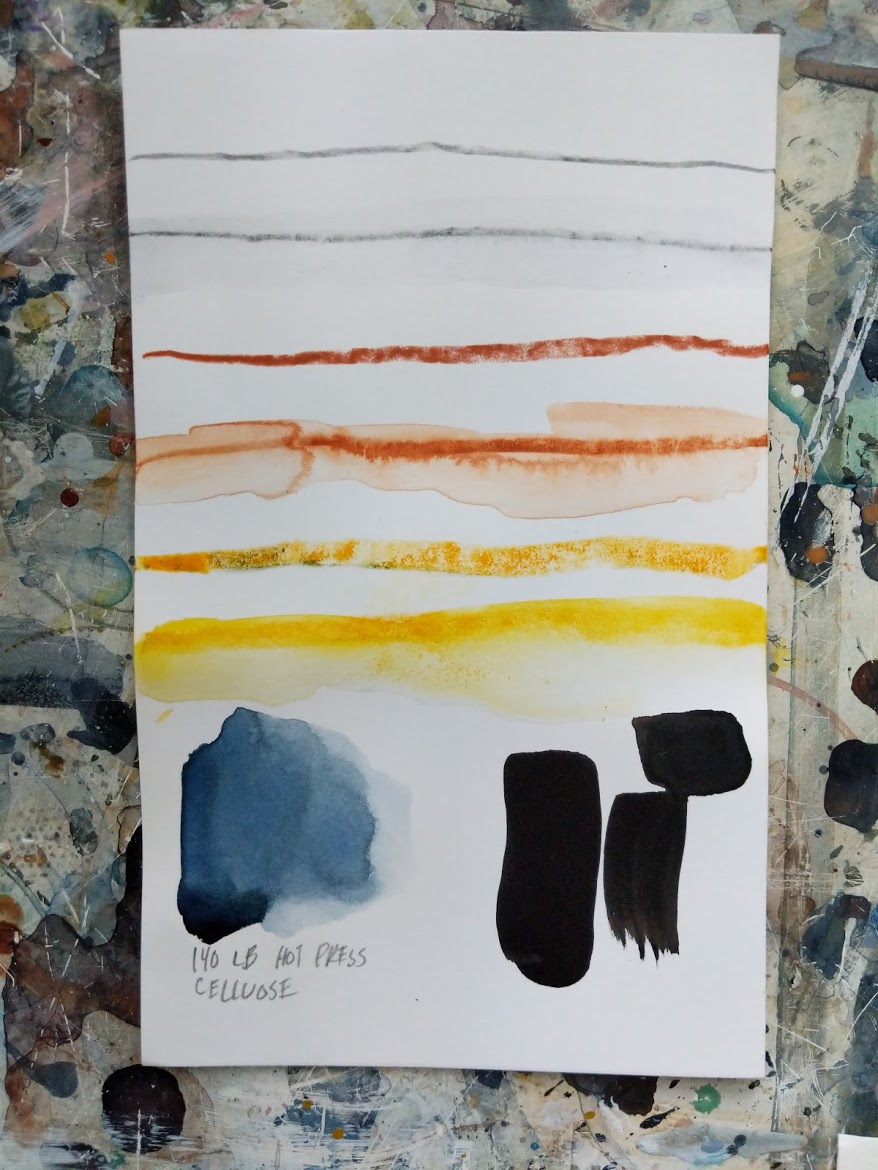
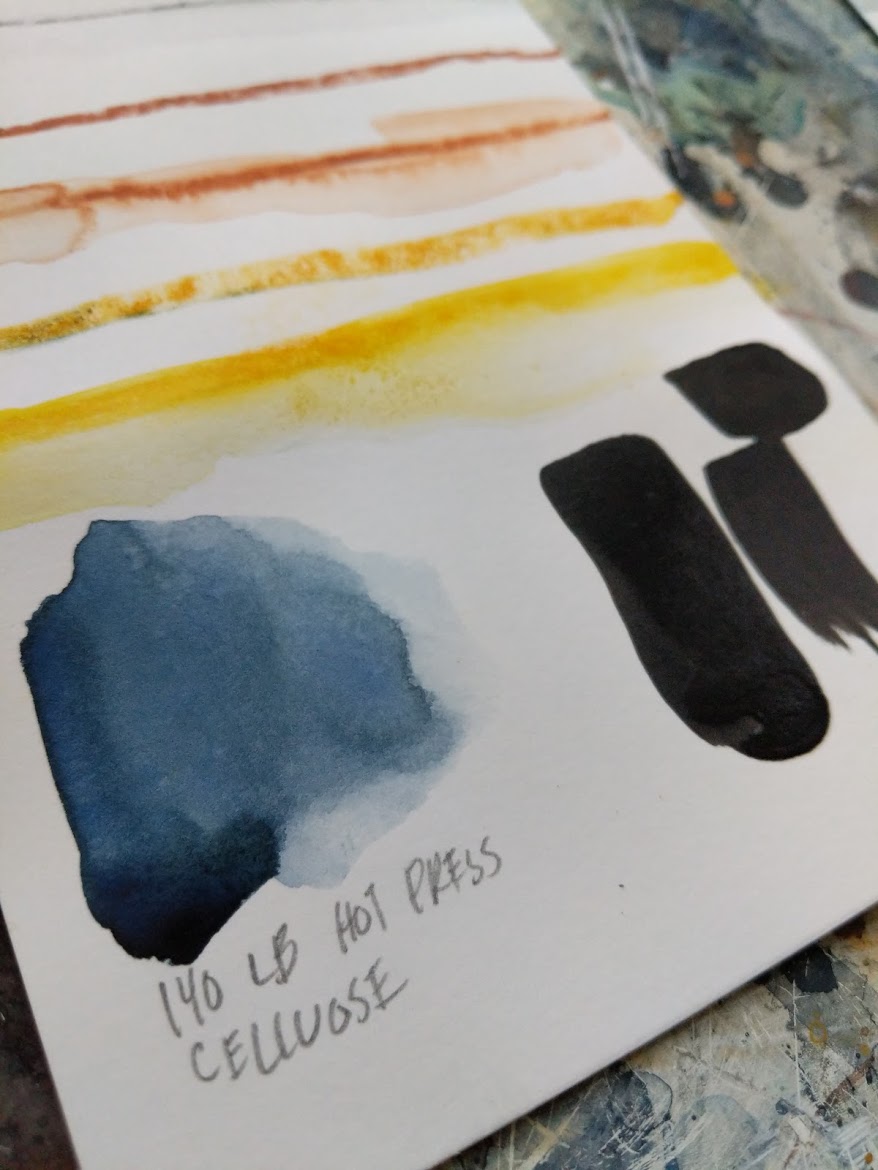
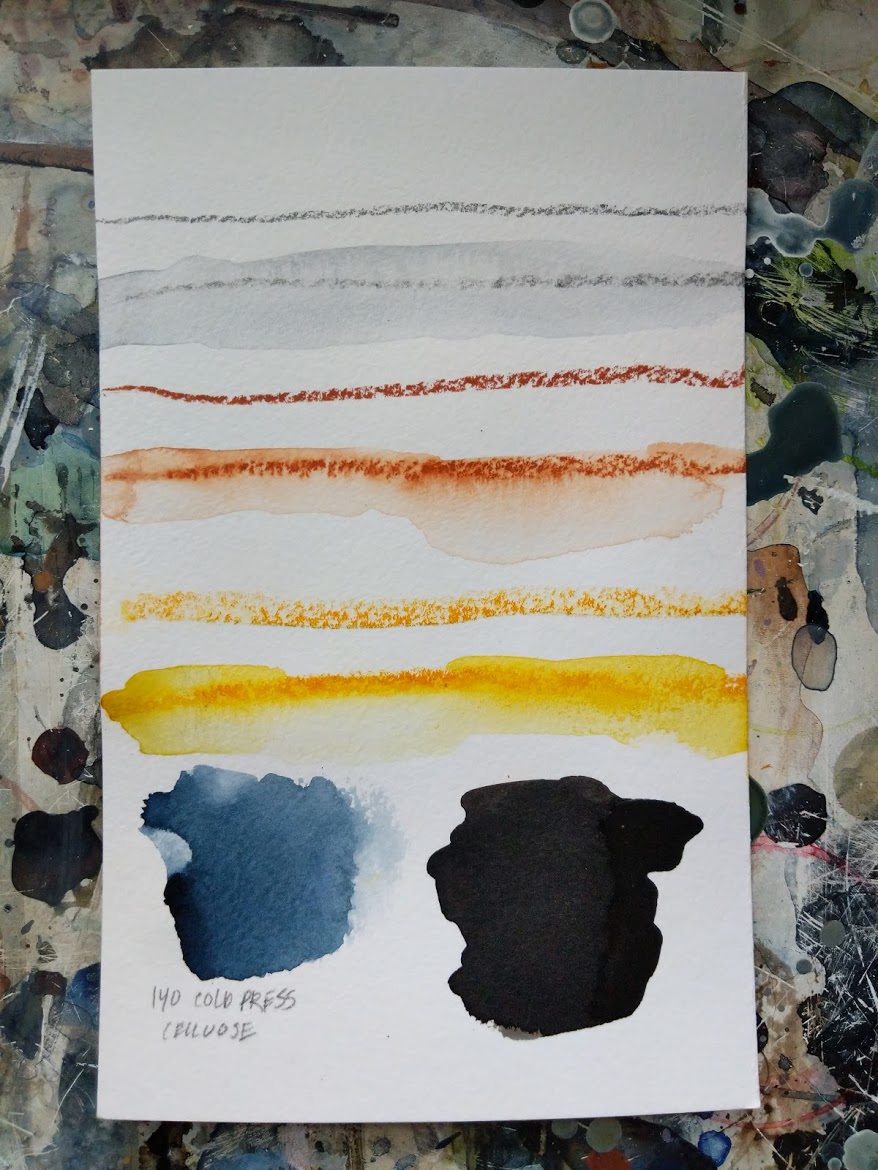
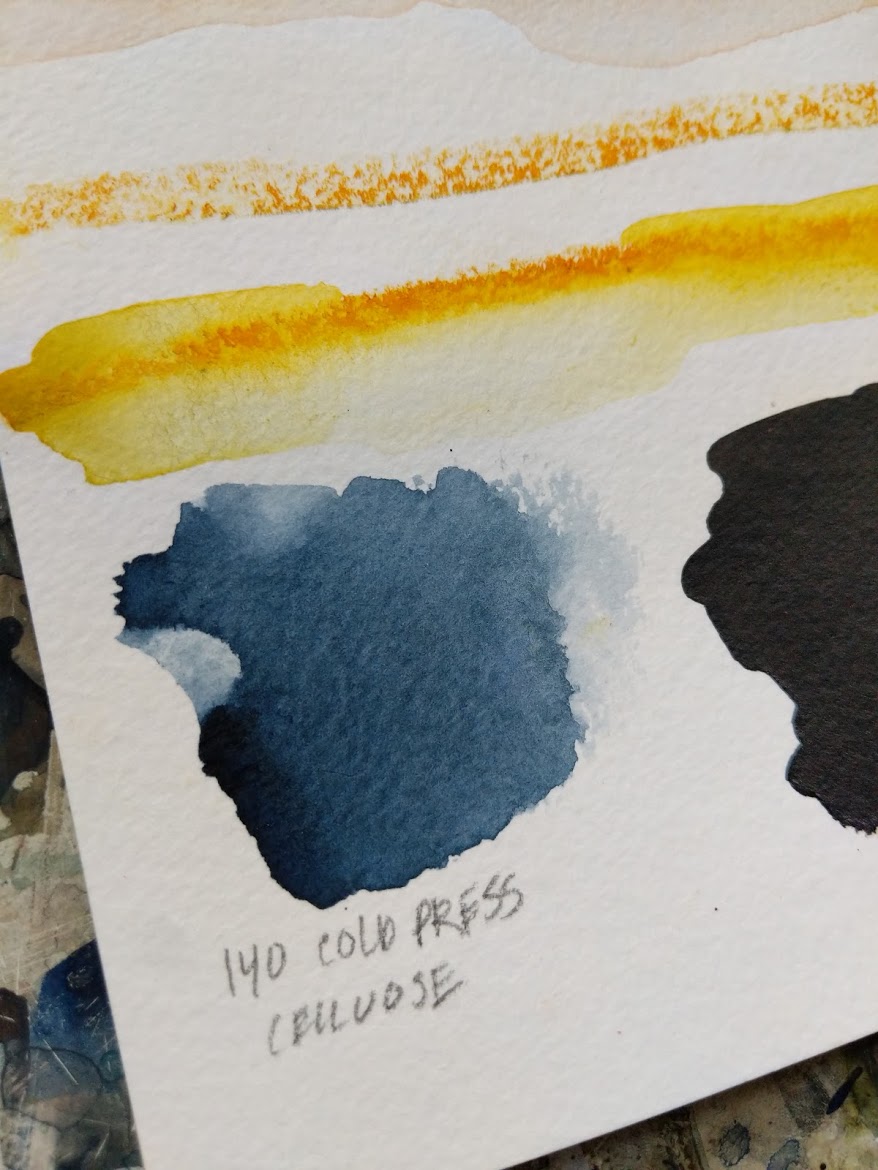
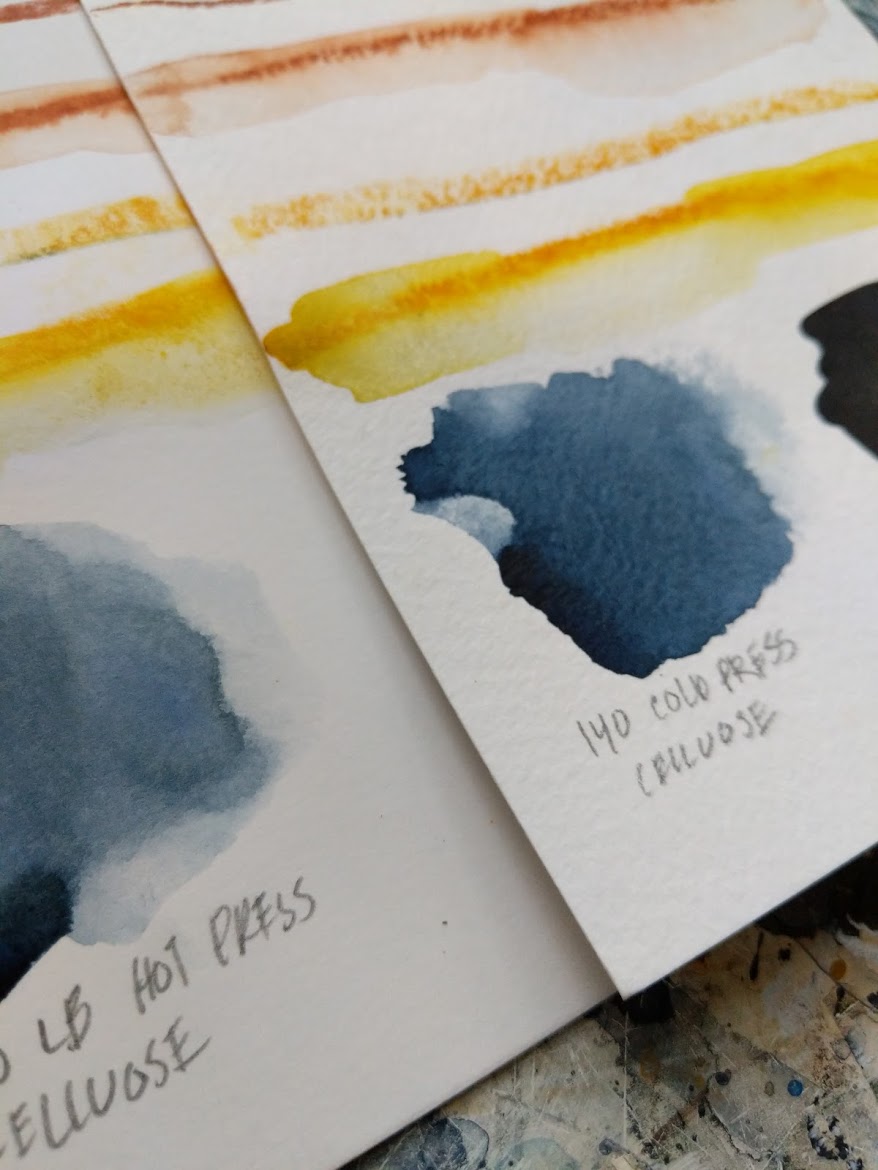
140 lb Hot and Cold Press on 100% Cotton:
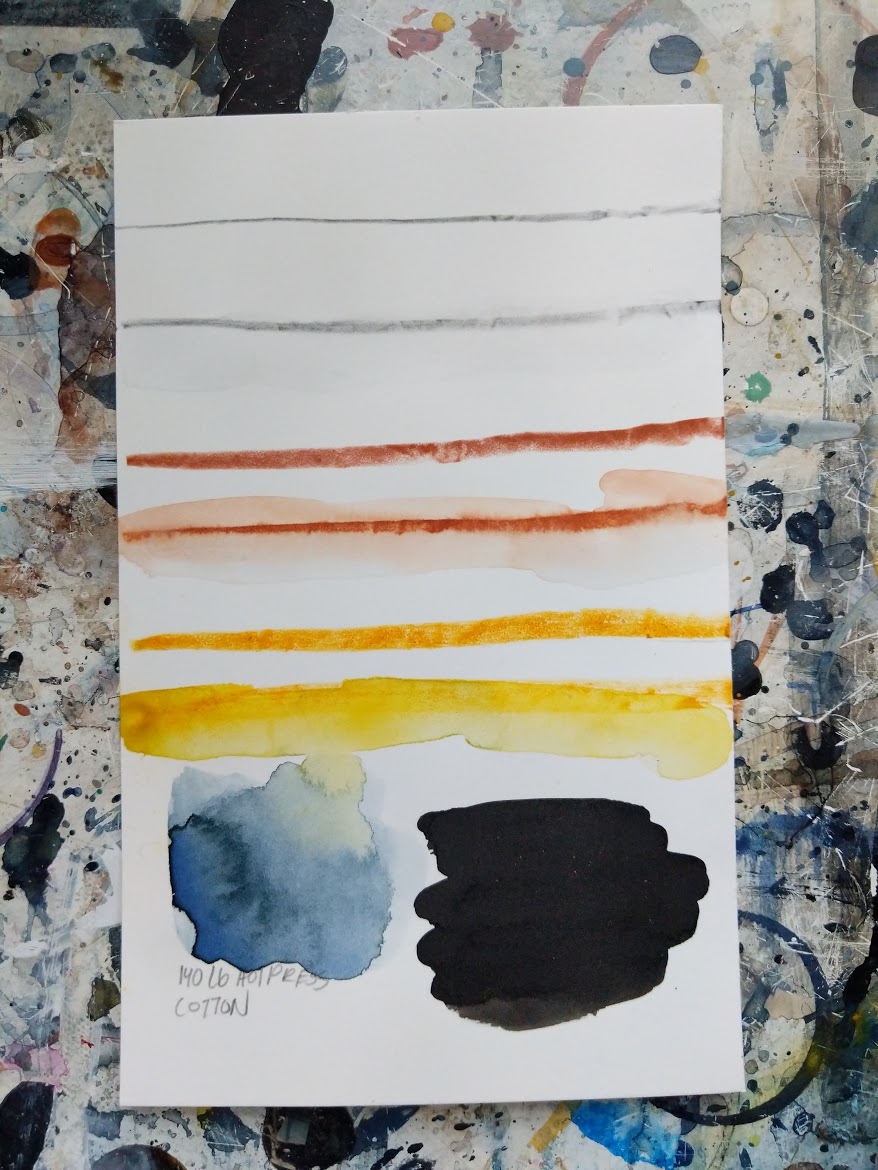
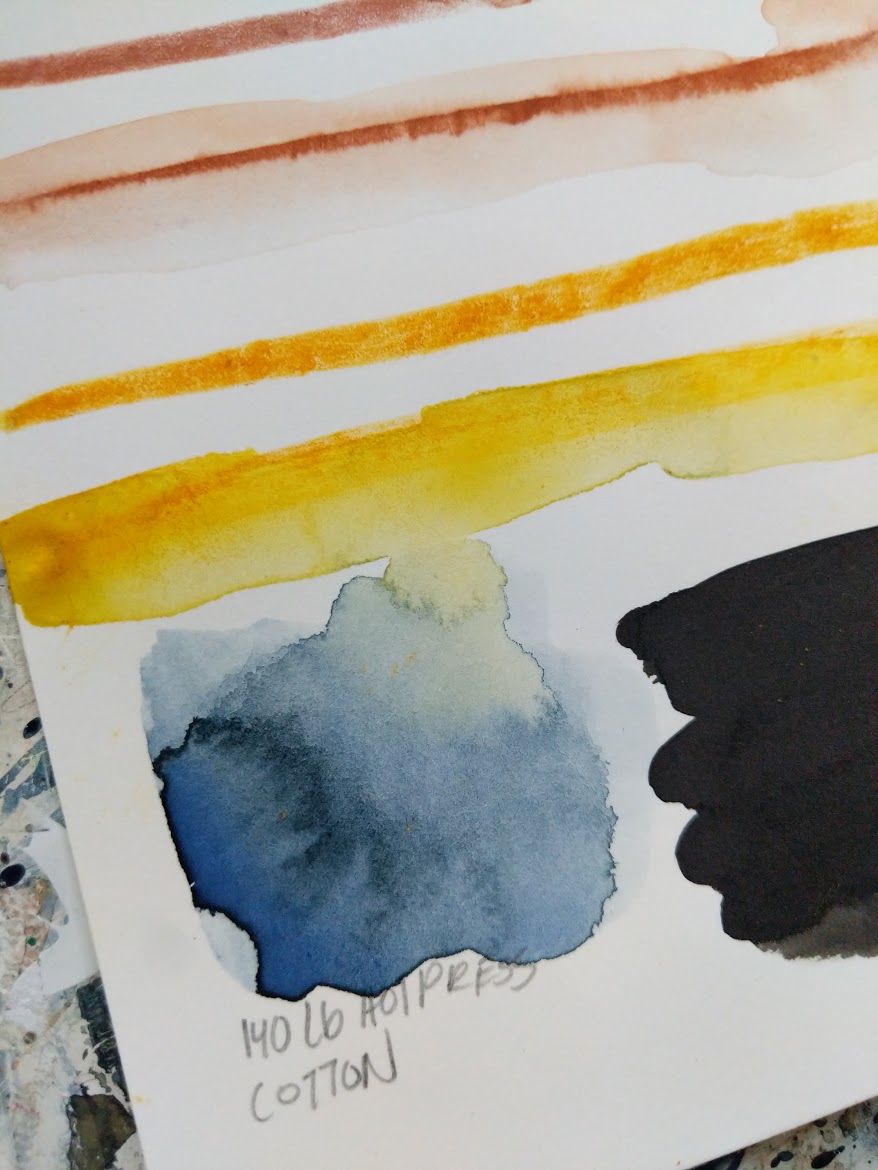
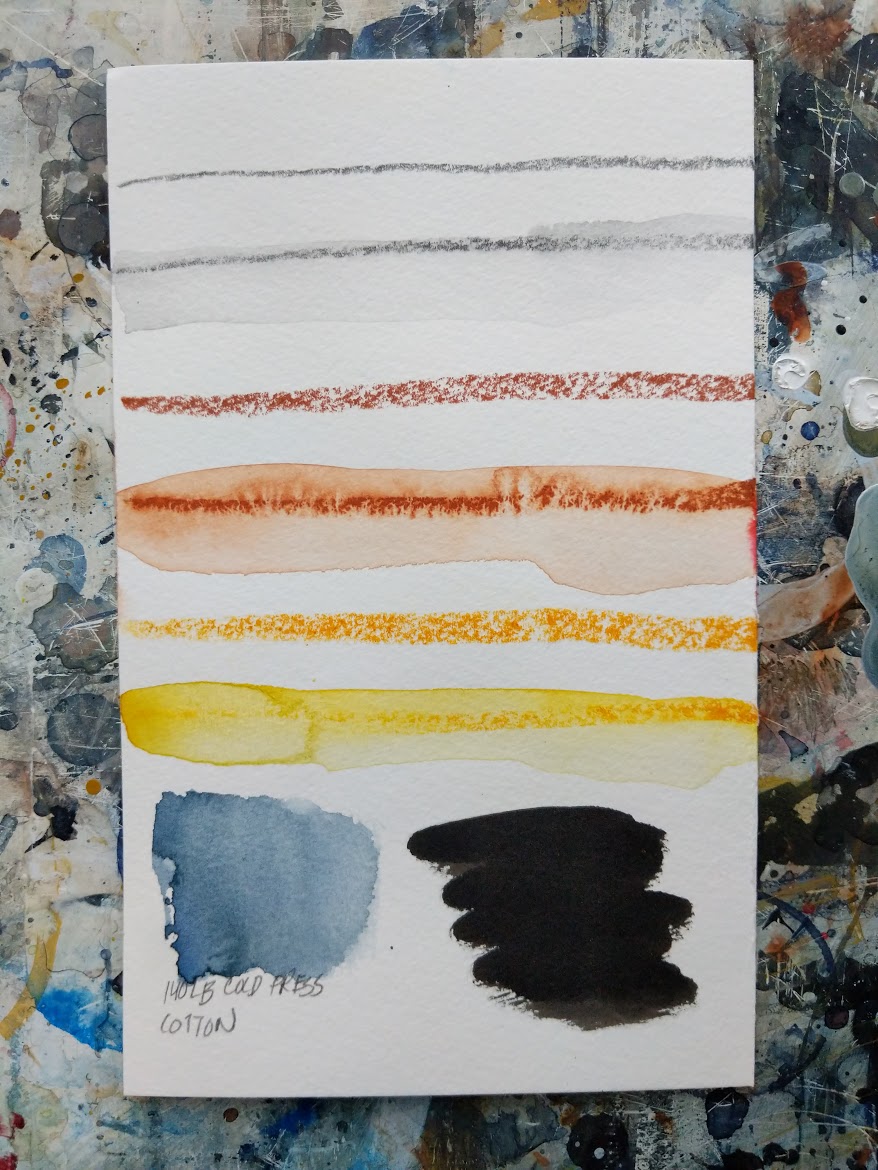
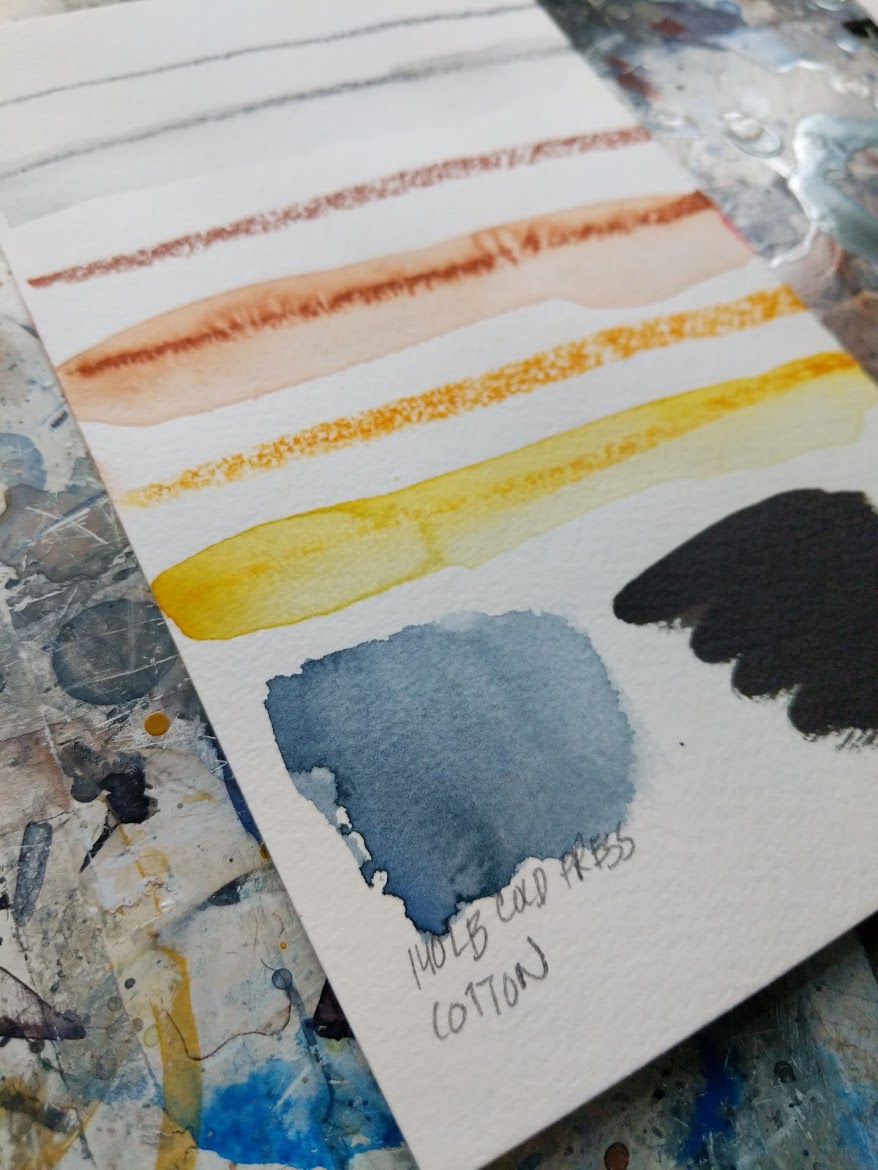
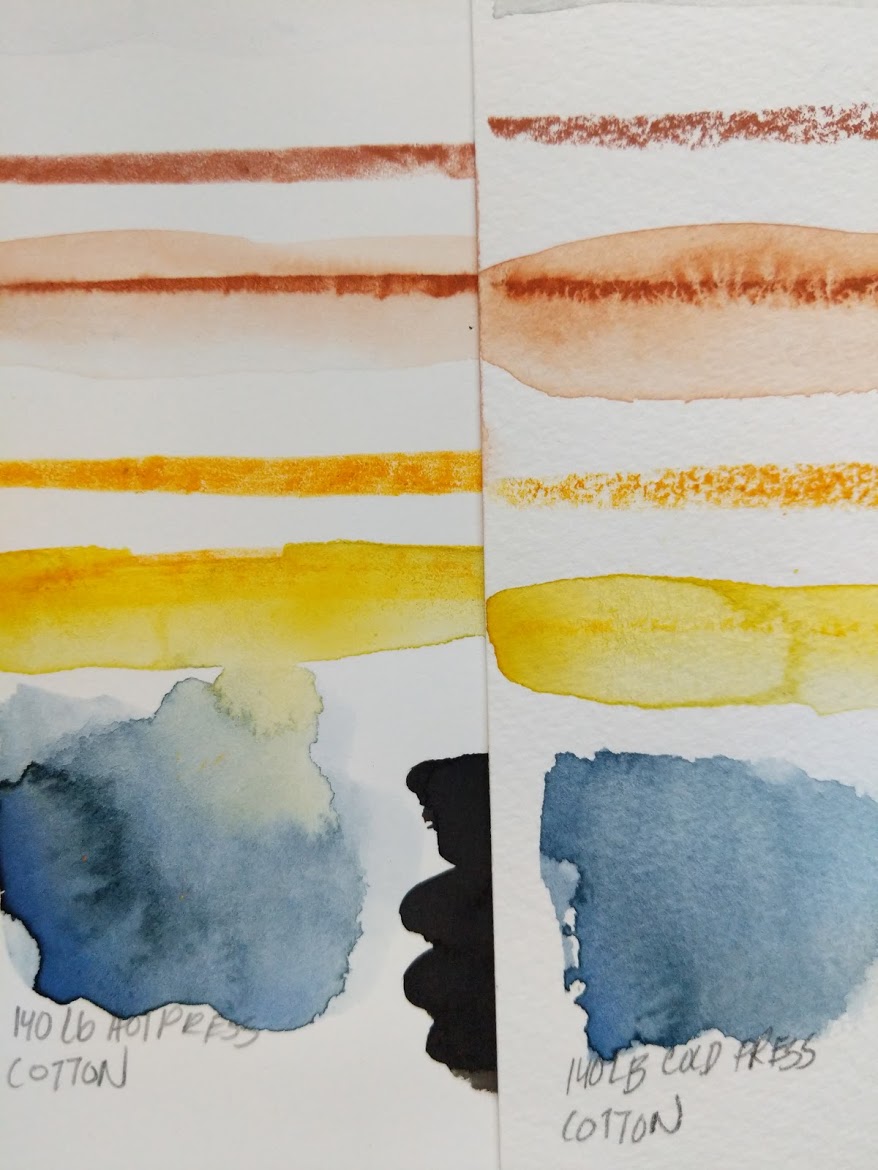
300 lb Cold Press Cotton:
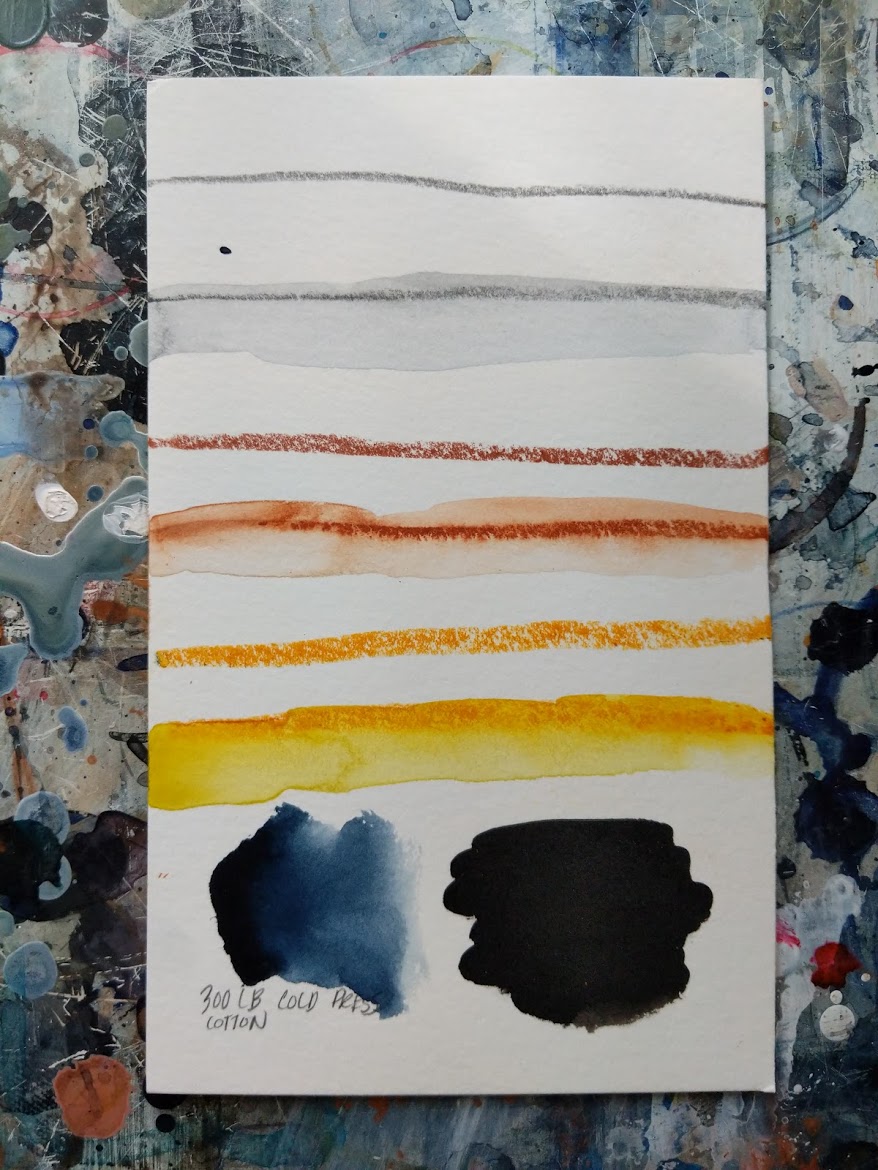
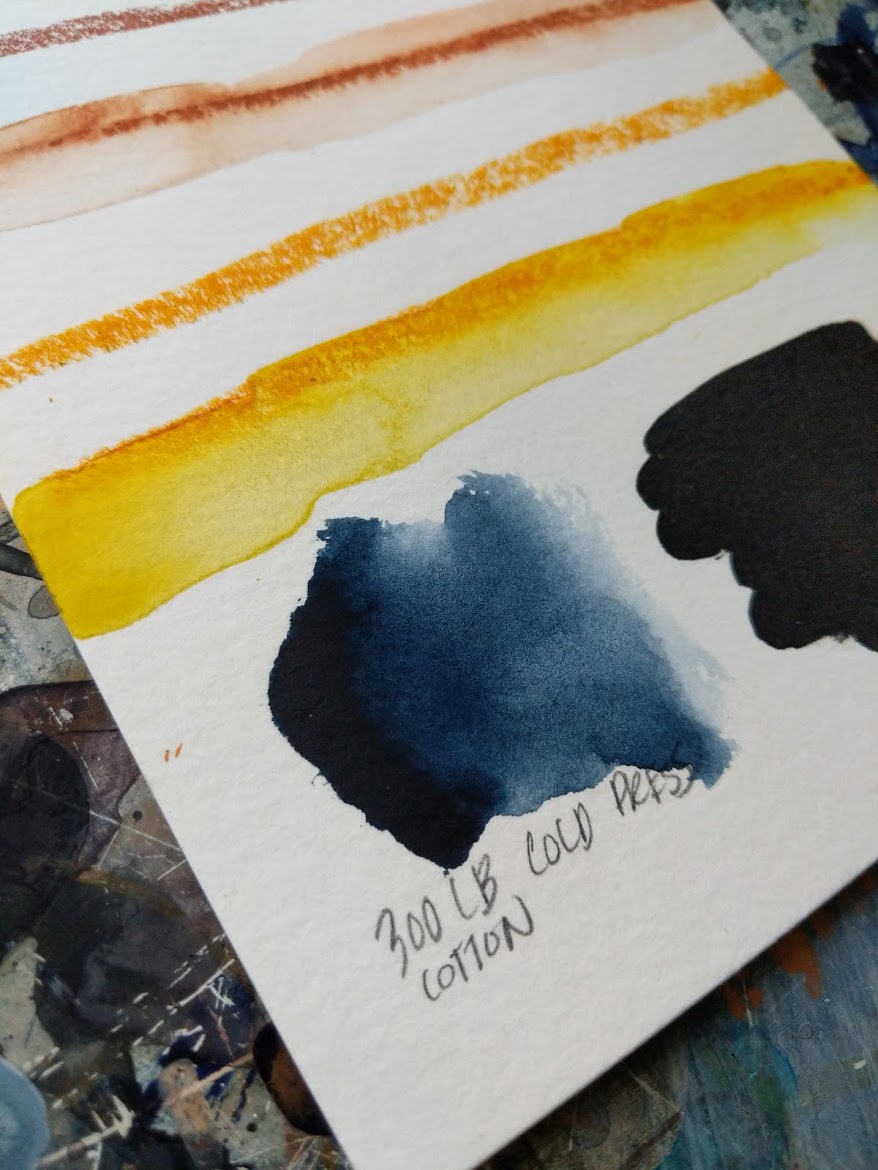
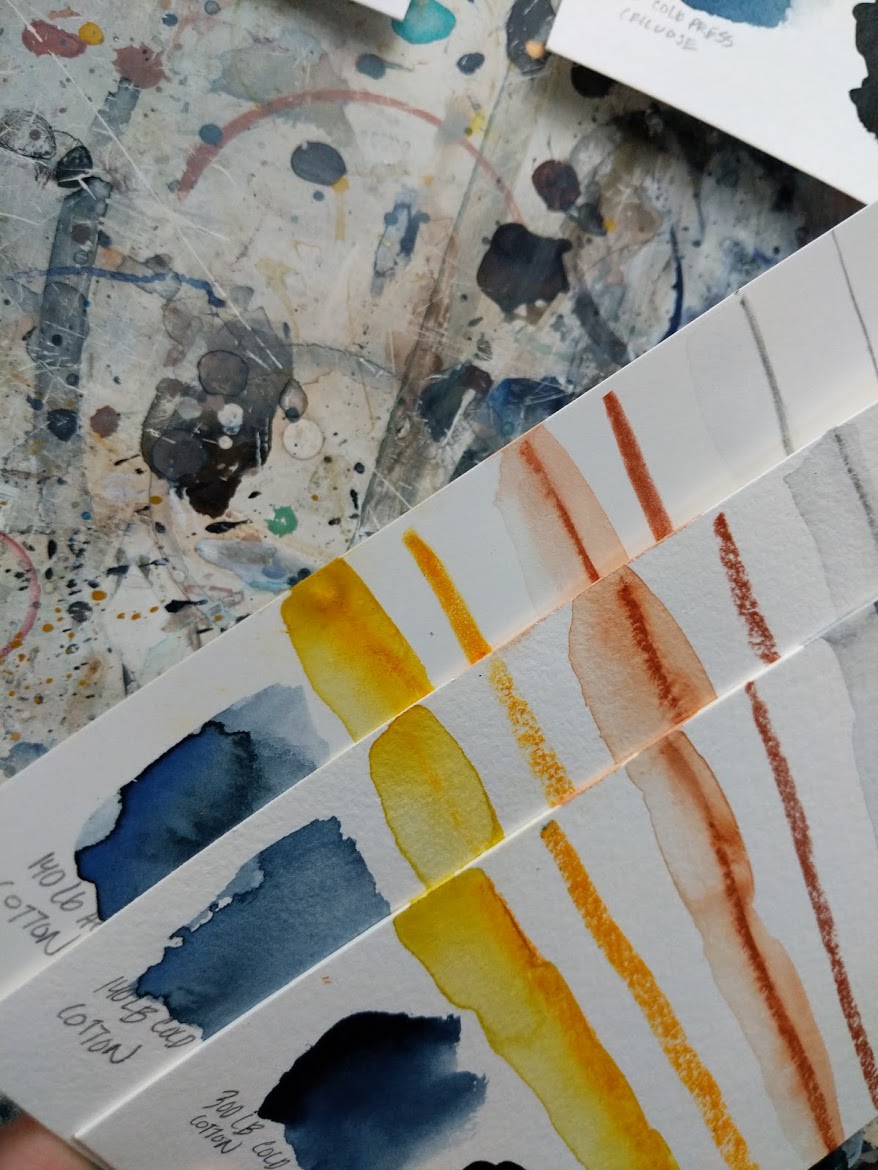
Additional Papers/Canvas:
Rough (Handmade):
Rough, heavy rag with great texture. Takes heavy water techniques really well.
Strathmore Acrylic:
Visible texture, great absorbancy - a little hard to get details into the texture.
Strathmore Mixed Media:
Excellent for multiple types of materials, my go-to for mixed media techniques. Available in non-toned colors as well!
Fredrix Watercolor Canvas:
Great absorbancy, not too fast in that I can still move pigment around - but not too slow in that it takes too long to dry. Holds mixed media great and has a nice canvas texture. Warping is to be expected (it is real canvas after all!) but is removed by stretching the back, ironing the back or dry-mounting. My go-to for travel watercolor work.
I had a lot of fun playing with all these papers and I hope this might be handy if you find yourself in a pickle choosing a surface! But again, it’s definitely so, so worth it to do your own tests as well, I never leave a pile of paper tests without learning something!
<3
A Look into my Composition Book
The other day I posted a look into my composition sketchbook on instagram and received a few questions on the process, materials and ideas behind keeping this collection. Rather than write out paragraphs to respond there, I thought I’d take some time to explain it’s purpose a bit here.
This book cover has seen a lot of paint/chalk/pencil.
The Book:
I’m a big fan of keeping multiple sketchbooks at one time - each with a very clear and defined purpose. Color tests, travel sketches, morning sketches, still life contours, and a composition book. Keeping things separated like this allows me to reference sketches and images faster and it just appeals to the side of my personality that likes to have a space for everything, and everything in it's space.
For the Composition book I use a large sketchbook from Canson. This book serves two methods of organizing compositions;
1.) Collecting sketches from other books/cut paintings with particular compositions that I feel could use more exploration and gluing them in.
2.) Creating purely compositional study sketches on the pages.
By adhering to these two tenants I end up with a book of painting ideas divorced from color (mostly) and subject - but focused on rhythm, movement and motion.
Lines and movement.
The Why:
I use these pages to explore ideas for paintings in a pre-sketch phase. If I’ve got an idea that I want to work with, but it lacks form I open up this book and search through the studies until something clicks. If nothing does, I make however many more studies are necessary.
The Result:
Often times at first glance the final painting doesn’t look very similar to the composition work. With so many layers and lines making up the final piece the initial blocking out can be hard to spot - but if you look close enough most of the time it becomes apparent. (I say most of the time, as there are definitely cases when the final work morphs into something totally diffferent!)
Looking back on years of composition studies has been pretty enlightening as to the evolution of my process. The forms I work with are so dependent on location and my surroundings that’s it’s pretty easy to pinpoint when I moved from Miami, when I spent time in Ireland, Thailand and Japan, when we were snowed in last year and couldn’t leave for 4 days… at this point it functions almost as a journal with no words.
<3
Testing indigo/gold/gray.
Glued-In page.
Cut pieces.
Staying Organized with a Downloadable ArtPlanner Page!
I keep a studio planner.
Some days are literally just "PAINT" in all caps with two squiggly arrows running up and down lengthwise to denote time. Other days are scheduled out down to the half hour with meetings, reminders, notes about orders and shows. For both sorts of days I use the same basic layout; a full page broken up into sections and times where I can rank the most important tasks for the day.
The last time I posted I my studio planner on instagram I received an influx of questions regarding how I set up the page, my ranking system, etc. So this time - I thought I would turn my basic art planner page into a pdf - you can download it and try out the layout and see if it helps organize your studio practice.
If you try it out, tag me with #artplannerpage - I'd love to see how you use it!
